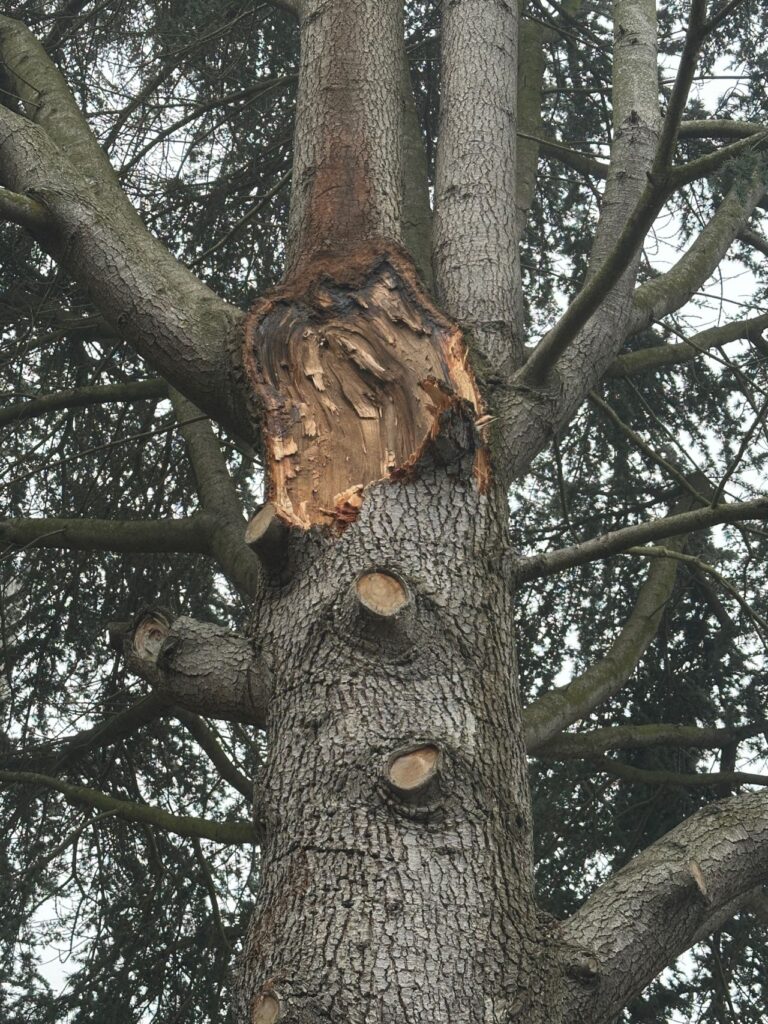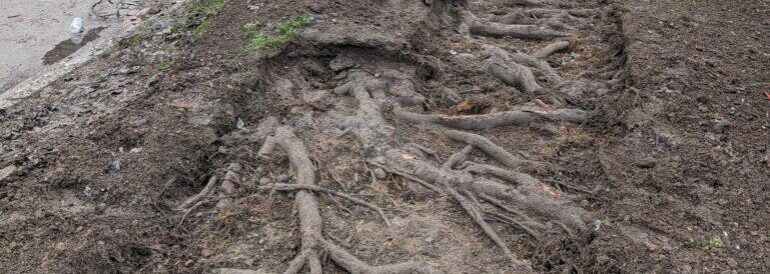Problem Trees in Seattle: Managing Challenging Species
The urban forests in Seattle are vital in making the city livable, with shade, beauty, and better air quality. Not every type of tree is best suited to the crowded urban environment, though. Certain species which are useful in the wild may present a major nuisance in the urban environment, and become a liability to property owners and municipalities.
This guide will discuss the reasons why trees are problematic in Seattle, some of the most usual suspects, and some of the best ways to manage them.
What Makes a Tree “Problematic” in Seattle?
Trees may be a nuisance in cities such as Seattle because of their size, root systems, growth patterns and ecological effects. In most cases, trees are deemed problematic when they cause problems to infrastructure, safety, or ecosystems.
Seattle is a densely populated city with an old system of infrastructure, and this may pose some difficulties to trees with wide root systems, weak branches, or those that grow fast.
- As an example, roots of trees that grow under sidewalks can make them crack and lift up, whereas branches may be dangerous during storms. In a recent study, it was estimated that tree-related sidewalk damages cost the city an estimated 85 million dollars in repairs each year (Seattle Department of Transportation, 2023)

Figure 1: Root of tree damaging the sidewalk Seattle Department of Transportation. (2023. Sidewalks and tree obstruction report. Retrieved from Seattle.gov.
Why Do Problem Trees Become Issues in Urban Settings?
The city of Seattle presents special problems to trees. Cities do not allow trees to grow as they are not given space to grow roots and canopy in a forest.
This has made it such that tree roots tend to grow horizontally in search of water and nutrients in places that cause destruction to infrastructure, including sidewalks, plumbing and foundations.
These issues are compounded by the high rainfall in Seattle (37 inches on average per annum) which makes the soil wet and promotes the growth of aggressive roots. The situation is complicated by windstorms that are frequent in the city, since tall trees with brittle branches have more chances to break or fall.
Common Problems These Tree Species Cause
The problem trees in Seattle cause various problems, which affect not only the owners of the houses but also the urban landscape.
Root intrusion is the most common issue especially by the fast growing trees such as cottonwoods, willows and poplars. These trees possess vicious root systems which tend to invade sewer lines, plumbing as well as the foundation structures.
This root damage may cause a lot of repair expenses, which usually include the replacement of the sidewalks, plumbing repairs, and foundation stabilization and cost up to 3000-8000 dollars (Today Homeowner, 2024).
Storm-related structural damage is another problem. Black locusts and willows are trees that are likely to fail in their limbs, particularly in times of storms common in Seattle. Their branches are brittle and can fall causing damages to property and even harm to people.
In extreme situations, whole trees can fall and this can cause massive destruction to the buildings, cars, and infrastructure. The cost of cleanup and repair of such incidents may be expensive as fallen limbs may need to be removed by a professional, which further increases the expenses.
Along with the physical destruction, invasive species such as English holly are causing ecological problems in the parks and woodlands of Seattle.
These trees grow into thickets that displace the native vegetation, and this interferes with the wildlife habitat and lowers biodiversity.
With the expansion of the holly and other invasive species, there are long-term issues to the healthy ecosystem, which will eventually reduce the overall green space health of the city.
When Problem Trees Might Still Be Appropriate
Although problem trees tend to be disruptive, they can be beneficial under the right circumstances. As an example, cottonwoods (Populus deltoides) are rapid growing trees that provide instant shade and soil stabilization, and are thus applicable in rural areas where space and infrastructure are not a constraint. They are well-rooted, which helps to reduce erosion in areas that require the natural regulation of water (USDA Forest Service, 2023).
Due to the columnar habit, Lombardy poplars (Populus nigra Italica) are often used as temporary privacy screens in urban areas. Despite their short lifespan of 15-20 years, they grow rapidly, which is why they are perfect in cases when privacy is needed as quickly as possible, e.g., in construction areas or housing projects (WSU Extension, 2023).
Willow trees (Salix spp.) are useful in ecological restoration work especially in riparian areas. They have extensive root systems that help to avoid soil erosion along the banks of rivers and also offer shelter to different species of birds and amphibians. Willows will stabilize the ecosystem in these particular environments and prevent the problems that the shallow root system of willows in urban environments can cause (USDA Forest Service, 2023).
Management Strategies for Existing Problem Trees
Proper management of problem trees is based on the evaluation of the health and risks of the tree and then the necessary interventions. The initial one is a tree risk assessment by an ISA-certified arborist. The arborists follow the set regulations to assess the structure of the tree and root behavior. This is done to assess whether a tree can be maintained safely or whether it has to be removed.
In the case of root management, root barriers can be installed or root pruning can be used to avoid further damage of surrounding infrastructure. Root pruning works, but needs to be restricted to 25 percent of the root system, to prevent destabilizing the tree. When the roots of the tree have done major damage to the sidewalks or plumbing, then the help of professionals is required to put up barriers or redirect the systems.
Crown reduction is the other method that can be used to minimize the risk of breakage of the limbs during the stormy seasons in Seattle. This method entails the cutting down of the canopy of the tree to reduce the wind resistance and structural collapse. In cases where removal is not essential, rerouting of the sidewalk or making the walking surface flexible can be an alternative to removal as explained in the Trees and Sidewalks Operations Plan (2022) of Seattle.

Figure 2: Blooma Tree’s Ricky Santana-Silverio, WSDA-certified Ground Crew and Plant Healthcare Technician, performing deep-root fertilization treatment to enhance soil health and promote optimal tree and shrub vigor. With expertise in pesticide application and soil treatments, Ricky brings his passion for plant care and outdoor work to comprehensive tree healthcare services.
Seattle’s Top 5 Most Problematic Tree Species
Certain species of trees in Seattle may lead to serious problems with their rapid growth rate, invasive nature, and the effect on urban infrastructure.
Seattle’s High-Risk Tree Species: Quick Reference Table
Overview of Urban Tree Challenges
| Tree Species | Primary Issues | Severity |
|---|---|---|
|
Cottonwood Trees
The Messy Giants
|
|
|
|
Black Locust
The Aggressive Invader
|
|
|
|
English Holly
The Native Displacer
|
|
|
|
Mature Willows
The Structural Hazards
|
|
|
|
Lombardy Poplars
The Short-Lived Screens
|
|
1. Cottonwood Trees – The Messy Giants

Figure 3: Root damage caused by a cottonwood tree lifting up a sidewalk in Seattle.
The cottonwoods (Populus deltoides) drop 25 million seeds annually that plug up the area and lead to allergies (USDA Forest Service, 2022). Their roots can grow as high as 75 feet and penetrate sewer lines, causing repairs that can be very expensive.
2. Black Locust – The Aggressive Invader

Figure 4: Black Locust tree with brittle branches that may fail during storms.
The black locusts (Robinia pseudoacacia) have a growth rate of 6 feet annually, and it is a vegetatively propagated plant (WSU Extension, 2023). They have sharp thorns and allelopathic chemicals that destroy the surrounding plants and are also hazardous to pedestrians.
3. English Holly – The Native Displacer

Figure 5: English Holly tree displacing native vegetation in Seattle’s green spaces.
English holly (Ilex aquifolium) is an invasive species, which replaces native plants and disrupts habitat of wild animals (NWCB, 2024). It is hard to eliminate because of its thick growth and thorny leaves, which limit the diversity of flora in the Seattle green areas.
4. Mature Willows – The Structural Hazards

Figure 6: Willow tree with shallow roots destabilizing infrastructure and soil.
The roots of Salix spp. (willows) are superficial and can extend 3-4 times the canopy and destabilize the infrastructure and soil (USDA Forest Service, 2022). They are also weak to storms because of their brittle wood which is dangerous.
5. Lombardy Poplars – The Short-Lived Screens

Figure 7: Lombardy Poplar tree used as a temporary privacy screen in urban settings.
The lombardy poplars (Populus nigra italica) are faster growing and have a shorter lifespan of 15-20 years and they are susceptible to disease such as leaf rust (WSU Extension, 2023). They are not appropriate in the long term because they have a short lifespan and are prone to diseases.
Better Alternatives for Seattle Properties
In the case of Seattle properties, Western Redcedar (Thuja plicata), Oregon White Oak (Quercus garryana), and Vine Maple (Acer circinatum) can be used as alternatives to provide privacy, seasonal color, and shade respectively. Amelanchier spp. (Serviceberry) provides beautiful flowers and Acer ginnala (Amur Maple) provides beautiful fall color.
Such trees are aesthetically and ecologically beneficial and do not pose the risk of invasive roots and damage to infrastructure. Find out about more Seattle native trees alternatives on our complete guide.
Professional Assessment and Removal Services
In the case of trees measuring more than 6 inches in diameter or trees close to buildings, it is important to seek the services of an ISA-certified arborist to carry out a professional tree risk assessment. The removal of trees is covered in the Seattle Municipal Code 25.11, which regulates trees in critical areas and requires the replacement of certain species.
Always use a contractor who is liable insured and certified, and who adheres to the Integrated Pest Management (IPM) principles to reduce the environmental impact on removal or treatment. Blooma Tree provides professional tree care services with certified arborists who ensure safe, compliant tree removal while protecting your property and the environment.


Blooma Tree crew expertly removed this failed limb from a client’s house during an emergency dispatch.
Allen Tate – Tree Healthcare Manager 






